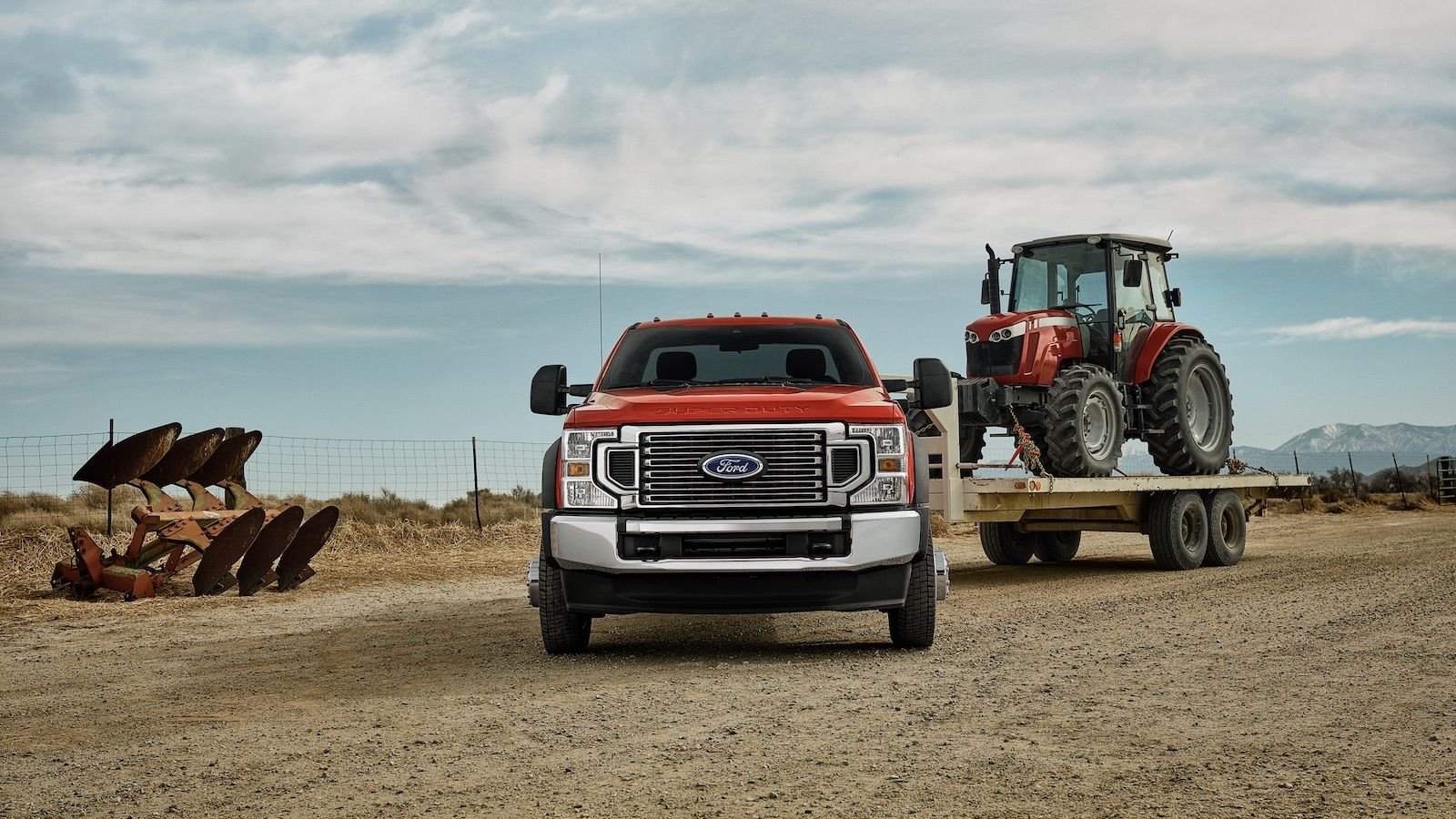Ford F-250: Towing and Hauling Specifications
If you want to know about your truck's weight capacity and your towing options, not to mention the towing maintenance, read on. We've got scoop on towing and hauling.
This article applies to the Ford Super Duty (1999-Present).
How much do you really know about towing in regards to your Ford Super Duty? If you don't know how much you can tow or you weren't aware of the special maintenance considerations that come into play, we've got you covered with our guide to towing. Keep reading and find out what you need to know before you tow.
Weight Capacity
Weight capacity, or payload capacity, refers to how much weight you can safely haul in the bed of your truck. These numbers will vary based on what year, model, and make your truck is. The 2022 Super Duty features a maximum payload capacity of 7,850 pounds, but that requires a very specific combination - the F-350 dual rear-wheel XL two-wheel drive with an 8-foot bed, 6.2-liter gas V8, and the Heavy-Duty Payload Package. In terms of towing capacity, the 2022 Super Duty offers up to 24,200 pounds of capability for F-450 Crew Cab diesel models.

Tow Packages
Tow packages bundle a number of features together at a price that is cheaper than ordering parts individually. The current-gen Super Duty is offered with Ford's High Capacity Trailer Tow Package that features an upgraded axle that increases GCW on diesel models from 23,500 to 30,000 pounds, as well as an optional Ultimate Trailer Tow Camera System and Pro Trailer Backup Assist Package that take a lot of the guesswork out of towing.

Trailer Sway Control
Trailer sway control is a nifty feature that helps you control your trailer and prevent it from swaying excessively, which could lead to bad news. TSC helps maintain control by selectively braking and adjusting engine power electronically. Trucks equipped with TSC are noticeably easier to control and more stable when towing a load. Other notable modern towing features include Lane-Keeping Alert, which helps ensure a trailer stays between the lines, as well as a number of cameras positioned around the truck to help the driver keep tabs on their trailer.

(Related Article: Why is My Trailer Swaying? - Ford-trucks.com)
Scheduled Maintenance
If you intend to frequently tow or haul heavy loads, you'll be using your truck in special operating conditions. This means that your scheduled maintenance will have some items that need special attention. For example, Ford recommends more frequent service on certain components. Tires should be rotated and inspected every 5,000 miles and oil and oil filters should be replaced every 5,000 miles or 6 months. In addition, transmission fluid should be replaced every 30,000 miles, and transfer case fluid every 60,000 miles. Unlike your normal maintenance, you have to do the basic maintenance more often, almost twice as much as your normal schedule.

Common Questions
What is my truck's towing capacity?
This will vary based on your make, model, engine, and other features. You can find your specific truck's towing capacity here.
How do I avoid trailer sway?
If your truck does not have trailer sway control, there are steps you can take to prevent sway. Make sure that you don't have too much weight on your hitch. Both the trailer and your truck should be flat and even. Make sure heavier cargo is at the front of the trailer. Make sure your tires are inflated properly and don't exceed the towing capacity of your truck.
What is the size of my trailer hitch?
To determine the size of your trailer hitch, measure the height and width of the opening. The two most common sizes are 1 1/4" x 1 1/4" and 2" x 2".
What PSI should I set my tires on when towing?
Your tires should be close to max PSI when you are towing. Do not exceed the max PSI of your tires! You can find your specific tire's max PSI by reading the sidewall of the tire. A heavy load causes sidewall flex in your tires which is bad for tread life and generates a lot of heat. By keeping your tires properly inflated, you will keep them cool and extend tread life.
(Related Article: How to Measure Trailer Tire Pressure? - Ford-Trucks.com)
Related Discussion
- F-250 Towing Guide - Ford.com






